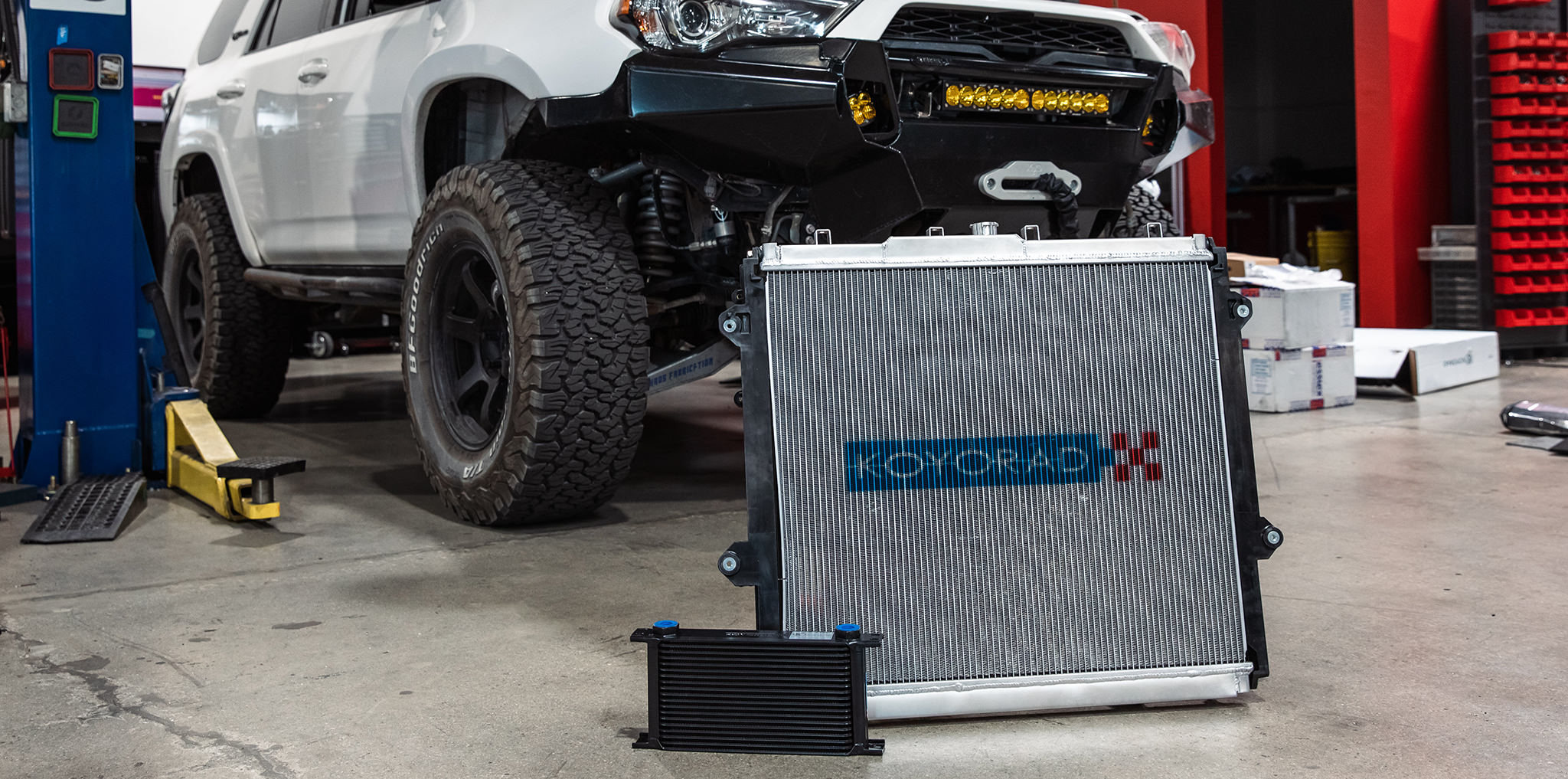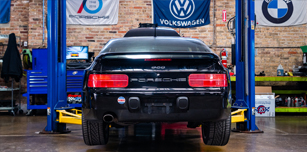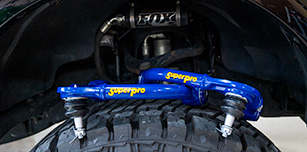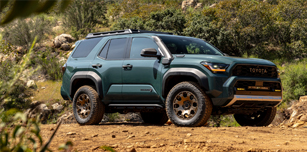- Adding weight to the Toyota 4Runner in the form of bumpers, winches, tools, wheels/tires, etc. puts more stress and heat into the engine.
- Koyorad offers a 36mm Hyper V-Core Series aluminum radiator and 19-row universal cooler (for transmission fluid) for the 5th-gen 4Runner to battle climbing temps in an overlanding or off-roading scenario.
- Separating the transmission cooler helps the radiator perform better by not pulling double-duty and prevents any chance of a fluid breach.
Avid overlanders are always looking for that next big adventure to discover unfamiliar places and beyond. The phenomenon known simply as a mixture of camping and off-roading has steadily increased in popularity over the years. Enthusiasts accessorize their four-wheel vehicles with everything they need to comfortably survive away from society, including a rooftop tent, cooking equipment, power, and water storage. There are many more items that would take forever to list, but all the added parts and accessories contribute to transforming your utility transporter into a mobile home away from home. Accounting for all the additional vehicle weight and power adders (such as a supercharger in this Toyota 4Runner TRD Pro) compound additional stress and heat to the engine, which is why installing an efficient radiator is imperative for improved cooling.
Overlanding and Off-Roading Produce Extra Heat
Building a proper cooling system for the off-highway environment is often an overlooked upgrade. Consider the facts when overlanding; the vehicle is driven hard at even low speeds, let alone wide open along winding trails or steep inclines. Heat kills, and proper cooling of engines, transmissions, and differentials is vital to their longevity. As constant heat builds up inside the radiator, temperatures cause catastrophic damage if the radiator is not efficient enough to effectively dissipate heat.
Introducing the 5th-Gen 4Runner Koyorad Hyper V-Core Series Radiator
Our friends over at Koyorad recently introduced a HyperCore series aluminum radiator and designed a direct replacement specifically for the 5th Generation (2010-2020) Toyota 4Runner 4.0L V6. “When you’ve invested so much into your overlanding vehicle, maintaining proper cooling is paramount,” mentioned Scott Oshiro, Koyorad USA’s sales manager. Upgrading to an aluminum radiator like the HyperCore radiator offers a 33% increase over the OEM unit, allowing for better efficiency in dissipating heat from its larger coolant capacity and preventing engine damage from rapid heat fluctuation. The Koyorad radiator’s fins, tubes, end tanks, and brackets are all brazed using a state-of-the-art Nocolok furnace, bonding all components to resist damage from vibration, oxidation, and road debris.
Bigger Radiator Isn’t Always Better
Contrary to widespread belief, running a larger radiator does not always mean improved cooling. The key to an effective radiator and its cooling efficiency is in the fin pitch design (number of heat-sinking fins per inch) and overall efficiency (how easily coolant passes through fins and how well it cools). With its high-density fin pitch, the Koyorad 36mm core (1.42-inch) catches more air entering the core to maximize cooling. The newly offered radiator comes with OEM-type mounting brackets for easy installation.
External Transmission Cooler Setup
Designed for off-road enthusiasts, the Koyorad 4Runner radiator omits the OEM-style internal automatic transmission (AT) cooler. “With the internal AT cooler removed, the radiator will have zero risk of coolant and transmission fluid breach, which can cause engine and drivetrain damage. With our radiator, an external transmission cooler (not included) will be necessary, which allows for visual inspections of the cooler itself,” states Oshiro. “The biggest advantages with an external setup are the ability to upsize and upgrade to offer improved transmission performance in the field. We have never found internal coolers to be particularly effective in high-performance, heavy-duty applications when compared to a standalone cooler,” said Oshiro.
Transmission coolers are rated by GVW (gross vehicle weight) or by cooling capacity measured in BTUs. If calculating to achieve proper AT cooler capacity is not your cup of tea, we recommend using the largest, most efficient cooler that will fit in the space available. Evasive Motorsports were tasked with the custom install for this particular 4Runner as it already came equipped with a Magnussen supercharger kit and aftermarket winch, which made it a more complex install; however, after building custom brackets and some slight trimming, they were able to retrofit Koyorad’s remote 19-row universal cooler in place of the factory unit. This heat exchanger uses a drawn-cup style design to effectively cool various automotive-grade fluids such as transmission, power steering, engine oil, and differential fluids. The Koyorad universal coolers feature -10 AN ORB (O-Ring Boss / O Ring Port) provisions at their inlets and outlets. These provisions adapt or reduce via AN to AN or convert from AN to Push-Lock style barb fittings for any needs.
Beat the Heat: High-Pressure Radiator Cap
Another key element in maintaining proper cooling capacity is to use a high-pressure radiator cap. A high-pressure cap with aftermarket radiators can aid your vehicle’s cooling system by causing the coolant’s boiling point to rise, increasing cooling efficiency. Oshiro recommends using the Koyorad SK-C13 high-pressure radiator cap rated at 1.3 bar (kg/cm2) or 18.5 psi or equivalent deep plunger style radiator cap with the HyperCore radiator.
From the Street to Track and now Off-Road
With over 60 years of manufacturing experience, Koyorad aluminum radiators continue to be a popular choice for most street and track performance applications, with new overlanding/off-road applications constantly emerging. Performance-minded customers opt for a quality radiator for assorted reasons: visual appearance, lighter weight, and robustness in construction. But amongst the justifications for the purchase, one reason remains constant: increasing heat rejection while providing better cooling performance.



















